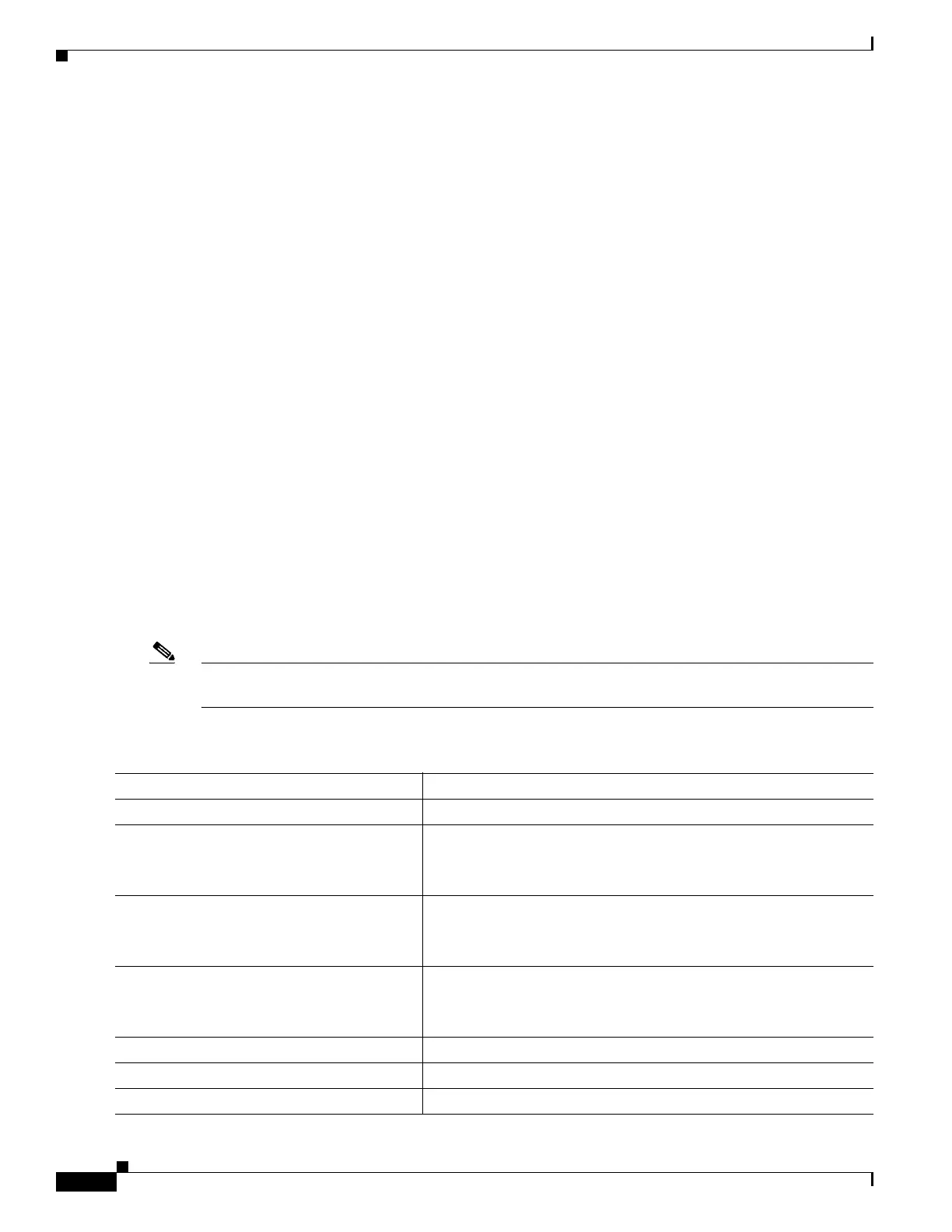44-30
Catalyst 4500 Series Switch, Cisco IOS Software Configuration Guide - Cisco IOS XE 3.9.xE and IOS 15.2(5)Ex
Chapter 44 Configuring Quality of Service
Configuring VSS QoS
class-default = 70%
Similarly, when another queuing class (say q3) is added without any explicit bandwidth (say, just a shape
command), then the bandwidth allocation is
q1 = 10%
q2 = 20%
q3 = min(35%, q3-shape-rate)
class-default = max(35%, (100 - (q1 + q2 + q3 )))
Priority queuing
Only one transmit queue on a port can be configured as strict priority (termed Low Latency Queue, or
LLQ).
LLQ provides strict-priority queuing for a traffic class. It enables delay-sensitive data, such as voice, to
be sent before packets in other queues. The priority queue is serviced first until it is empty or until it is
under its shape rate. Only one traffic stream can be destined for the priority queue per class-level policy.
You enable the priority queue for a traffic class with the priority policy-map class configuration
command at the class mode.
A LLQ can starve other queues unless it is rate limited. The supervisor engine does not support
conditional policing where a 2-parameter policer (rate, burst) becomes effective when the queue is
congested (based on queue length). However, it supports application of an unconditional policer to rate
limit packets enqueued to the strict priority queue.
When a priority queue is configured on one class of a policy map, only bandwidth remaining is accepted
on other classes, guaranteeing a minimum bandwidth for other classes from the remaining bandwidth of
what is left after using the priority queue. When a priority queue is configured with a policer, then either
bandwidth or bandwidth remaining is accepted on other classes.
Note Use bandwidth or bandwidth remaining on all classes. You cannot apply bandwidth on one class and
bandwidth remaining on another class within a policy map.
To enable class-level priority queuing in a service policy, follow these steps:
Command Purpose
Step 1
Switch# configure terminal
Enters global configuration mode.
Step 2
Switch(config)# policy-map
policy-map-name
Creates a policy map by entering the policy-map name, and enter
policy-map configuration mode.
By default, no policy maps are defined.
Step 3
Switch(config-pmap)# class class-name
Specifies the name of the class whose traffic policy you want to
create or change, and enter policy-map class configuration mode.
By default, no traffic classes are defined.
Step 4
Switch(config-pmap-class)# priority
Enables the strict-priority queue, and give priority to a class of
traffic.
By default, strict-priority queueing is disabled.
Step 5
Switch(config-pmap-class)# exit
Returns to policy-map configuration mode.
Step 6
Switch(config-pmap)# exit
Returns to global configuration mode.
Step 7
Switch(config)# interface interface-id
Specifies a physical port and enter interface configuration mode.

